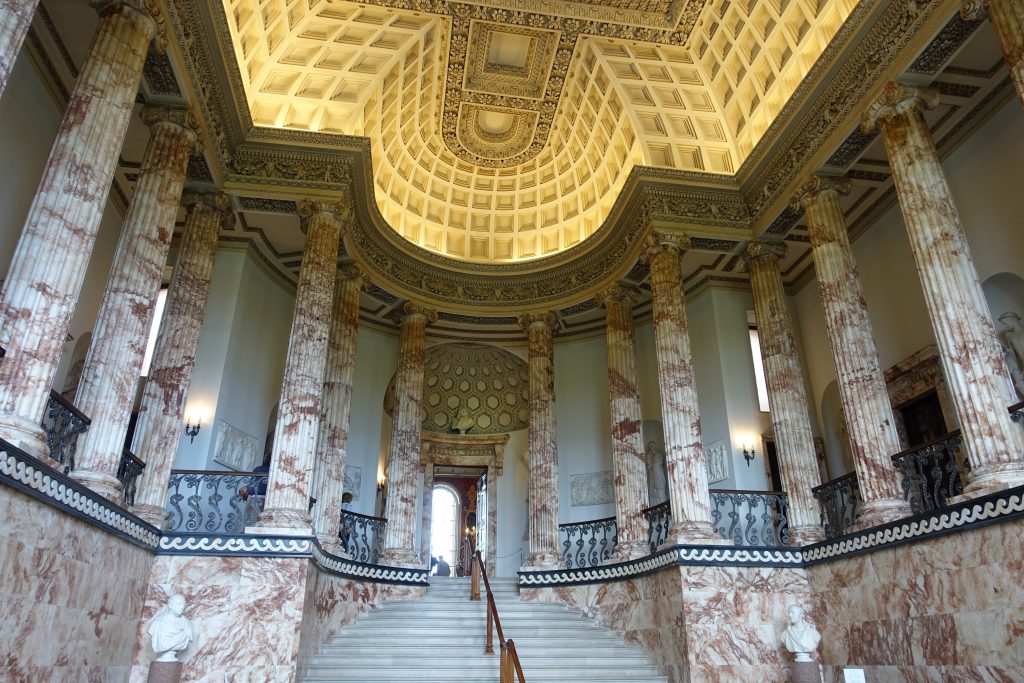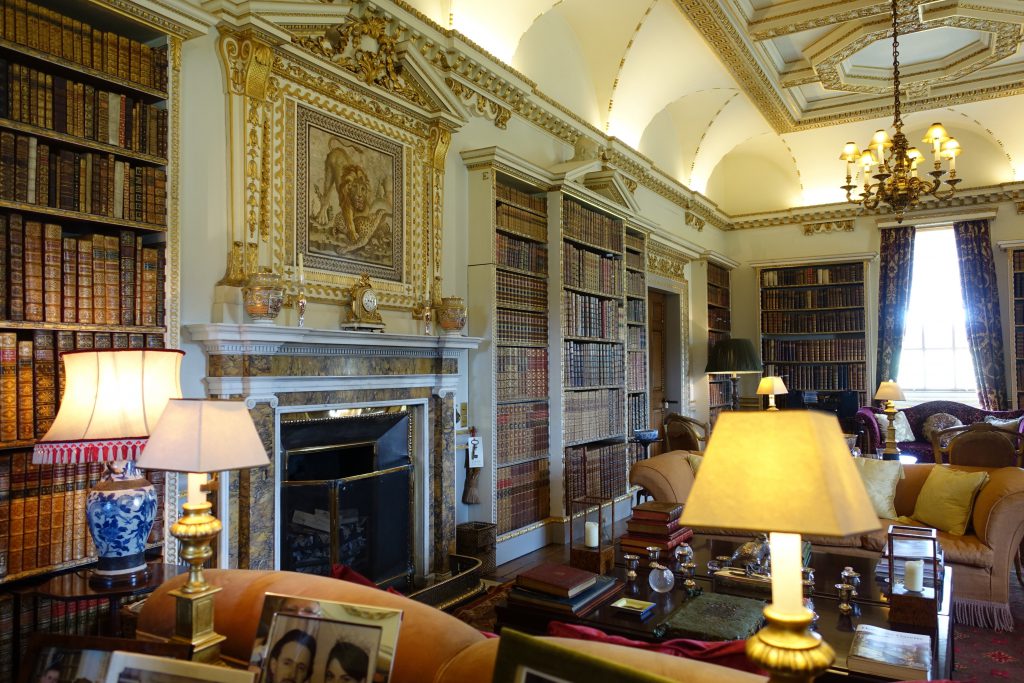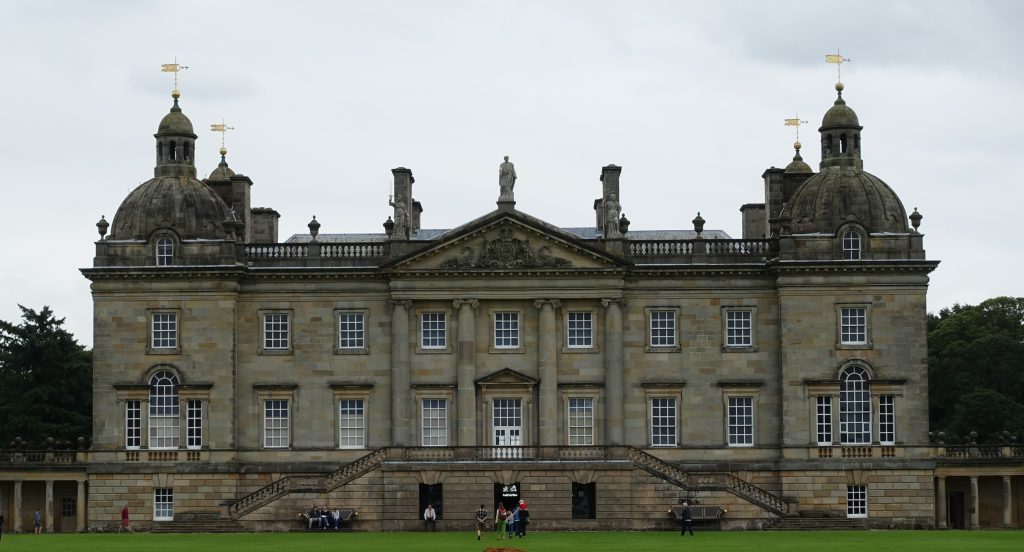
This week I am visiting another of England’s finest country houses, Holkham Hall in Norfolk.
Holkham is always compared with Houghton. This fine pair of Norfolk houses reflect the families who created them. Houghton projects Robert Walpole’s political stature and a London flamboyance. Holkham, though in some ways grander, is also more comfortable and at ease with itself reflecting the Coke family’s important place in rural Norfolk and the influence of the Grand Tour. The two houses provide contrasting interpretations of Palladianism.
Thomas Coke spent six years on the Grand Tour. He returned home in 1718 with a collection of antiquities having formed a strong friendship with the architect William Kent and Lord Burlington. Thomas Coke would design his home at Holkham with the advice of William Kent and his assistant Matthew Brettingham.
Holkham sits confidently and at ease in its landscape. The central rectangle, with its beautifully proportioned portico and rustic ground floor, is flanked by two wings designed to provide separate accommodation for visitors and the family.
The visitor is greeted by the magnificent Marble Hall, the two levels united by a sweeping staircase. It is based upon a design by Antonio Palladio for a Temple of Justice. The flanking Ionic columns carved in brown and white grained Derbyshire alabaster rise to meet an elaborate frieze and the extraordinary ceiling with its deeply incised panels, distorted to accentuate its height to the eye.
In my view the English Country House is one of our nation’s greatest contributions to human civilization. Their assemblance of paintings and objects have a particular beauty born of the passions of their families and, importantly, English Country House taste is also comfortable.

The Long Library forms part of the Family Wing which was the first part of Holkham to be built. The wing was designed in detail and decorated in the 1730s by William Kent. Over the fireplace there is a superb 1st century Roman mosaic depicting a Lion, originally from Umbria.
Thomas Coke placed great importance on his books and manuscripts and used the Long Library as his main living room. The Coke family continue to use this room as their Sitting Room on a daily basis – it has the atmosphere of a very social and comfortable space. With William Kent’s gilded bookcases and ceiling as the backdrop the room is once again furnished with that medley of styles and periods brought together by successive generations of the family which typifies English Country House taste.
The art collection at Holkham is also superb. As you process through the Staterooms you are greeted by an array of paintings by Poussin, Claude, van Dyke, and Ruben’s exceptional ‘Return of the Holy Family’.
To find out more about this exemplary English Palladian house and its collections visit www.holkham.co.uk.
It is almost time to leave the North Norfolk coast with its enormous skies, beautiful villages and coast and return to our own stunning county of Sussex. So it just remains to say “Wish you were here!”
By Rupert Toovey, a senior director of Toovey’s, the leading fine art auction house in West Sussex, based on the A24 at Washington. Originally published in the West Sussex Gazette.

